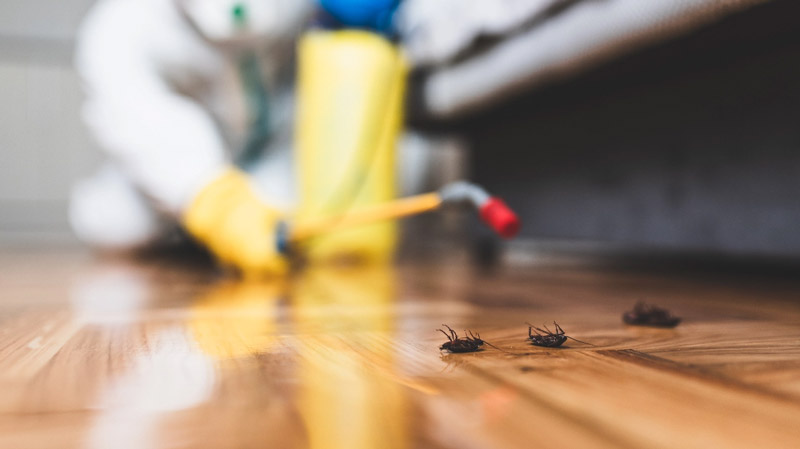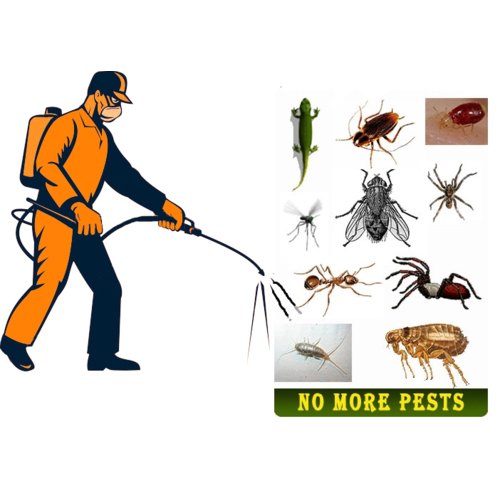Checking Out Invasion and Therapy Methods in the World of Bug Control
The landscape of insect control includes a myriad of difficulties, especially as invasions of typical family parasites proceed to advance. By incorporating precautionary actions with innovative monitoring strategies, such as Integrated Parasite Monitoring (IPM), home owners can much better protect their atmospheres.

Usual House Pests
When it concerns handling our home, comprehending common house bugs is important. These insects not just disrupt our comfort however can likewise posture health threats and damage building. One of the most common household bugs include ants, roaches, rodents, termites, and bed pests.
Ants, commonly seen foraging in kitchens, can contaminate food and establish huge swarms. Rodents, consisting of computer mice and rats, can create structural damages and lug diseases like hantavirus and salmonella.
Acknowledging the indicators of these parasites, such as droppings, nests, or bite marks, is vital for very early treatment (Pest Control Lockhart). Correct hygiene methods, sealing entrance factors, and preserving a clutter-free setting are reliable preventative actions. By identifying these common home bugs and recognizing their actions, home owners can take positive actions to reduce problems, making sure a healthier living environment
Recognizing Pest Infestations
Bug infestations can intensify promptly, turning a small nuisance into a substantial problem if not resolved promptly. Comprehending the nature of these problems is essential for effective administration. Parasites can invade domestic and industrial rooms for numerous reasons, including the search for food, sanctuary, or reproducing premises. Common elements adding to problems consist of inadequate sanitation, structural vulnerabilities, and seasonal modifications that drive parasites inside.
Determining the sort of bug is necessary, as various varieties display different habits and reproductive rates. Rats may establish nests in hidden locations while bugs like cockroaches thrive in damp settings. Early discovery typically hinges on recognizing indications such as droppings, chomp marks, or uncommon noises, which can show a trouble before it becomes extreme.
Ecological conditions also play an important role in parasite expansion. Warm, moist climates can facilitate the quick growth of pest populations, while changes in landscaping or building and construction can unintentionally create helpful atmospheres. For that reason, normal inspections and preventative actions are vital to mitigating the threat of infestations. An informed technique to understanding these dynamics prepares for efficient parasite management approaches in the future.
Therapy Methods and Techniques
Efficient therapy approaches and techniques are vital for alleviating parasite infestations and restoring a risk-free environment. A multifaceted approach is usually best, incorporating chemical, biological, and mechanical techniques customized to the certain parasite and the extent of the infestation.
Chemical treatments include using insecticides and herbicides, which can efficiently get rid of pests. Nevertheless, appropriate application and adherence to safety and security standards are critical to decrease threats to human beings and non-target microorganisms. Integrated Bug Administration (IPM) motivates the cautious use chemicals as a last option, counting rather on surveillance and limit levels to identify intervention demands.
Biological control methods entail introducing all-natural killers or parasites to lower insect populations. This technique is progressively preferred, especially in agricultural settings, as it promotes ecological sustainability.
Mechanical methods, such as catches and barriers, supply immediate remedy for insects without presenting chemicals. Options include sticky traps for pests or physical barriers for rats.
Ultimately, the selection of treatment technique should think about the specific insect, the environment, and prospective influences on human health and wellness and ecosystems. A balanced mix of these techniques can successfully take care of infestations while promoting lasting pest control options.
Safety Nets for Residence
Proactively dealing with parasite concerns prior to they escalate is crucial for keeping a healthy home atmosphere (Pest Control Lockhart). Carrying out reliable safety nets can dramatically decrease the probability of problems, inevitably safeguarding both your building and health

Proper landscaping also plays an important function in prevention. Keeping hedges and trees cut away from your house lowers the opportunities of bugs discovering their method indoors. Furthermore, ensure that drainage systems are operating effectively to stop standing water, which can pull in mosquitoes and various other visit the website pests.
Lastly, regular assessments are recommended. Frequently looking for indicators of bug activity permits early intervention. By embracing these safety nets, home owners can produce an environment that is much less hospitable to parasites, thus enhancing their general quality of life and lowering the requirement for considerable bug control interventions.
Industrial Pest Control Methods
A comprehensive technique to commercial bug control is important for organizations aiming to preserve a safe and hygienic setting. Effective methods entail a combination of routine inspections, worker training, and the execution of Integrated Pest Administration (IPM) techniques.
Regular assessments make it possible for early discovery of insect activity, enabling timely intervention. Services should develop a routine timetable for these analyses, focusing on high-risk areas such as cooking areas, storage space rooms, and waste disposal sites. Worker training is equally vital; team ought to be informed on the indicators of pest infestations and the value of reporting them quickly.
Implementing IPM practices assists alleviate bug concerns sustainably. This includes habitat adjustment, such as securing entrance factors and minimizing mess, along with Get More Info using all-natural deterrents before resorting to chemical treatments.

Additionally, working together with an accredited bug control provider ensures accessibility to specialist expertise and innovative therapy alternatives. This collaboration can result in personalized insect control plans customized site here to the details demands of business, lessening dangers and boosting general effectiveness. Ultimately, a proactive and enlightened technique promotes a pest-free environment, safeguarding both public wellness and service credibility.
Final Thought
Finally, effective parasite control requires an extensive understanding of common family insects and their behaviors, combined with targeted treatment approaches. Carrying out safety nets alongside therapy techniques such as Integrated Parasite Administration and biological control improves the ability to alleviate infestations. Normal assessments and a combination of chemical and mechanical remedies additionally add to preserving pest-free settings. Eventually, a well-rounded strategy to pest management is necessary for safeguarding living areas from unwanted intruders.